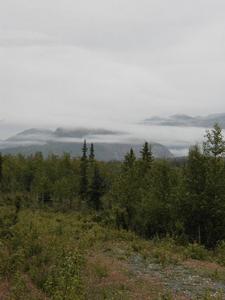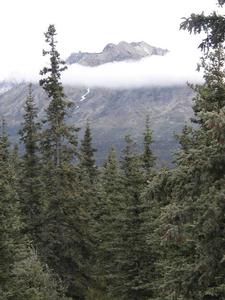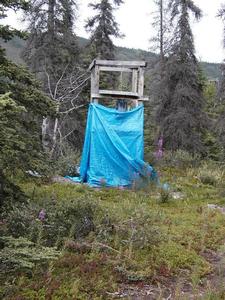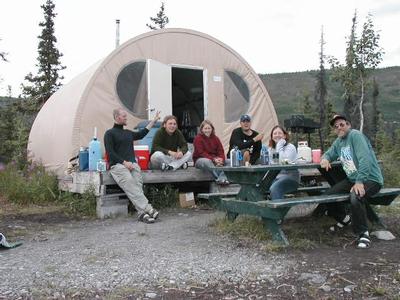20 July, 2001
Rainy weather...
7:00 p.m.
Last night, a gentle rain started to fall, continuing sporadically (off and
on) through this morning. Because rain can disrupt the electrical signals
from the geophones (seismic reflection) and create a short circuit in the
transmitter and the receiver (ground-penetrating radar), we were unable to
collect data today.
Life on the ice.... (almost)
I woke up this morning with a headache (a very unusual occurence). At first,
I thought it was because I may have been dehydrated (the valley receives less
that 12 inches of precipitation of rain per year), so I drank lots of water.
Drinking water didn't help the headache very much. I thought it may have
been that I was cold (it was chilly and damp this morning), so I put on
layers of clothes, put up my hood and warmed up. That didn't help much
either. I thought it may have been that I was tired (we are working and
playing hard, and keeping late hours), so I took a nap. That didn't help the
headache either. But it did help me realize that I was sore all over from
hauling equipment up the glacier. I took a couple of Ibuprofen to relax the
muscles (and will swap back rubs with Ranae at the campfire). Thankfully,
the sore muscles and headache relaxed at about the same time. I suspect that
the backpack I've been using to haul the 50-pound battery to the collection
site is pulling my muscles in the wrong directions. If the weather allows us
to collect data, I'll use my own backpack to carry the battery the mile and a
half to the next data collection site.
The break in data collection allowed Greg to analyze some of the data that
we've collected so far and everyone else to tour stagnant ice and a
vent on the north side of the glacier. "Stagnant ice" is ice that has
been buried underneath layers of sediment and is melting so slowly that
grass, trees and other vegetation have time to grow. "Vents" are places
where water leaves the glacier. Some vents can grow to be incredibly large.
The lull also gave everybody time to catch up on reading books, writing
postcards and napping. Ahhhhhhh....
Question (from July 18) for clever readers: Where else in the United
States might you find a good example of an intrusive igneous rock rising
above valley of sedimentary rock?
Answer : Devil's Tower in eastern Wyoming
Science at work
This afternoon, Greg, Kendra and Pat went to look for a second data
collection spot further up the glacier. The REU students continued to
explore possibilities for their projects. In a couple of days, they will
have to write and present their proposals for feedback from the professors
and peers.
As I learn more about the REU program, the more amazed I become. REU stands
for "Reseach Experience for Undergraduates". Students who are science majors
from small schools around the country are given the opportunity to get paid
to travel to remote regions, design and conduct an experiment, and present
their findings at professional conferences around the country. Most (but not
all) of the students are geology majors.
If you are reading this journal and haven't gone to / finished college yet
and you have even the slightest interest in research, know that someone is
willing to pay you to travel and conduct research. I wish I had known about
this program when I was an undergraduate!
Cheers.
~SM

Lion's Head shrouded in morning mist

Mt. Wickersham in the afternoon rain

The camp shower is luxurious.


Devil's Tower is another good example of intrusive igneous rock remaining above ground after the sedimentary rock that once surrounded it eroded away.
Contact the TEA in the field at
.
If you cannot connect through your browser, copy the
TEA's e-mail address in the "To:" line of
your favorite e-mail package.
|
